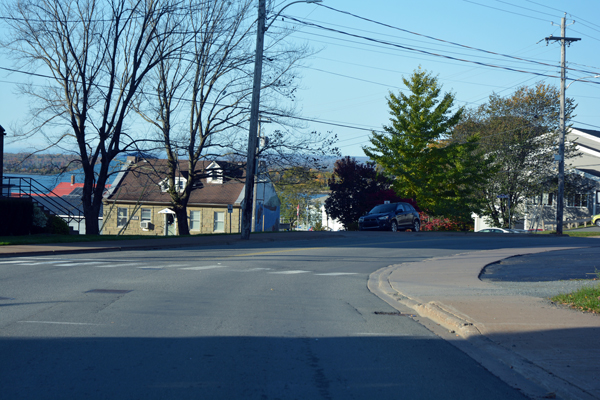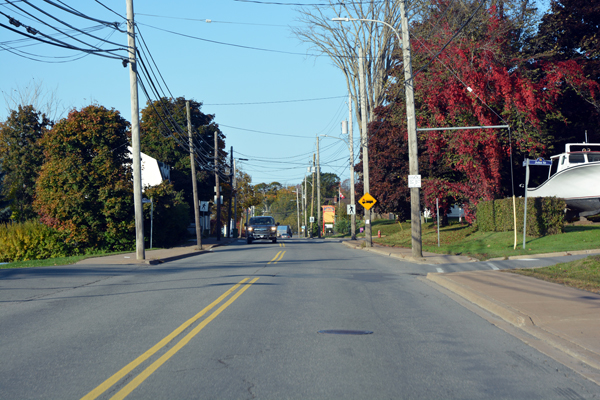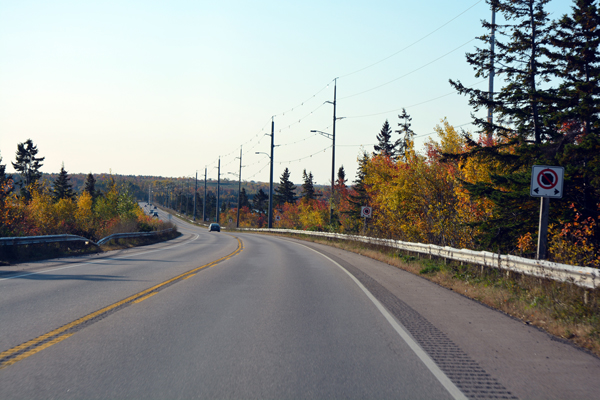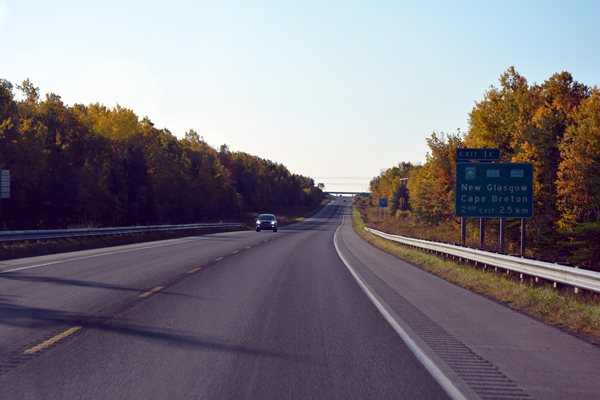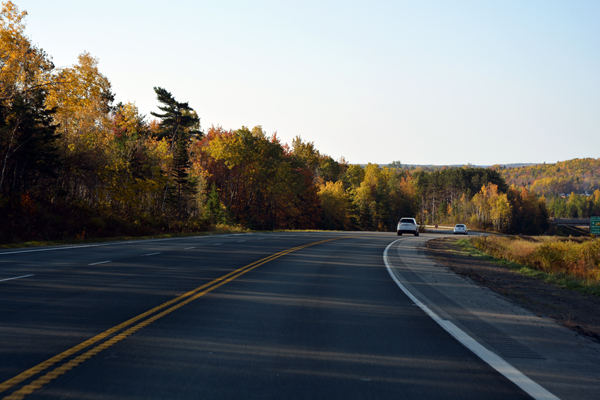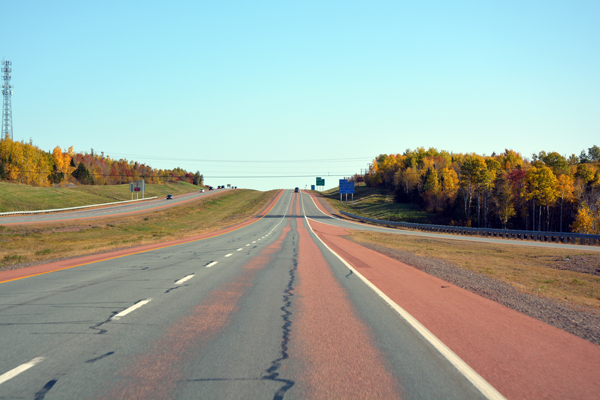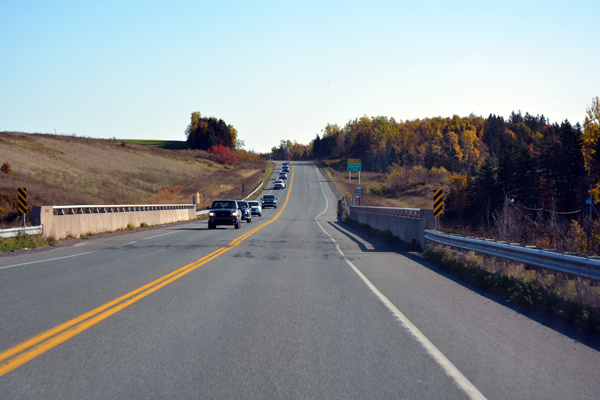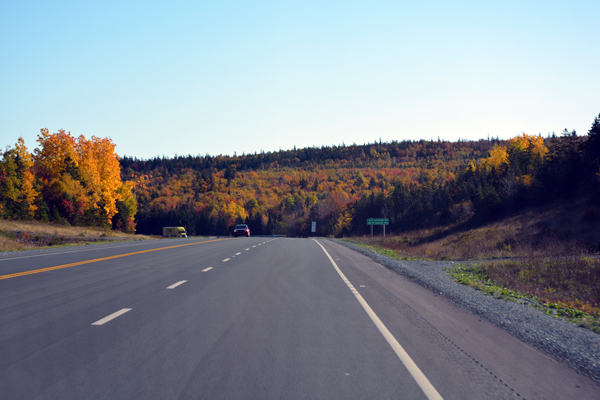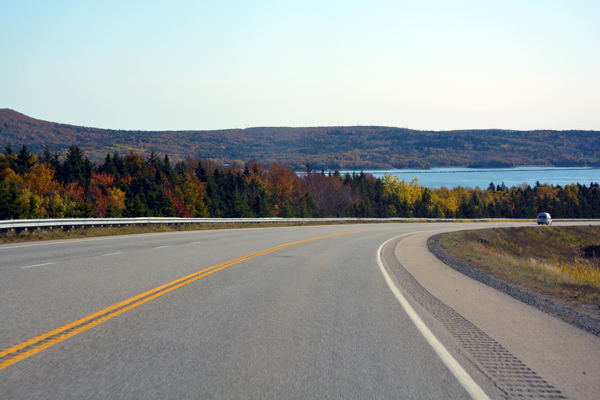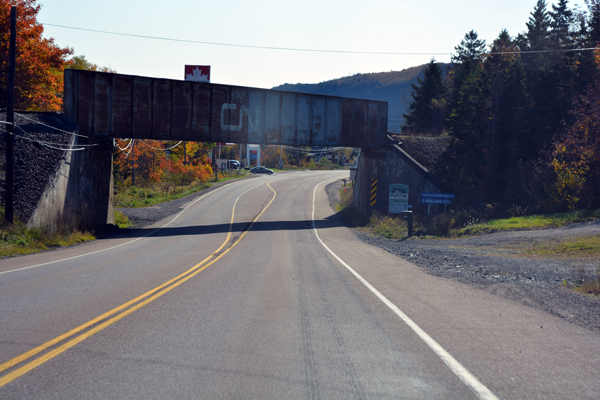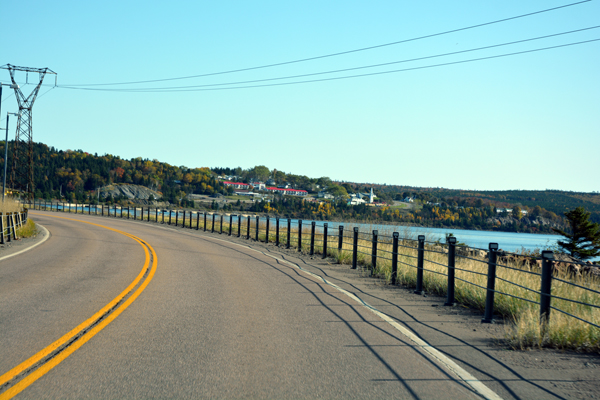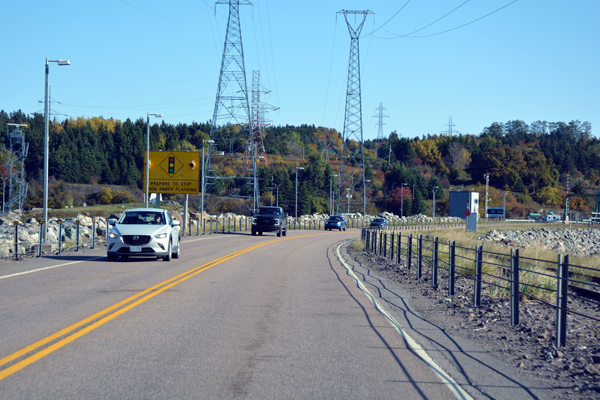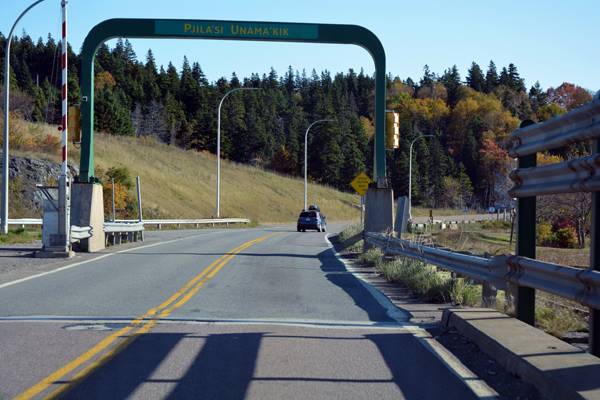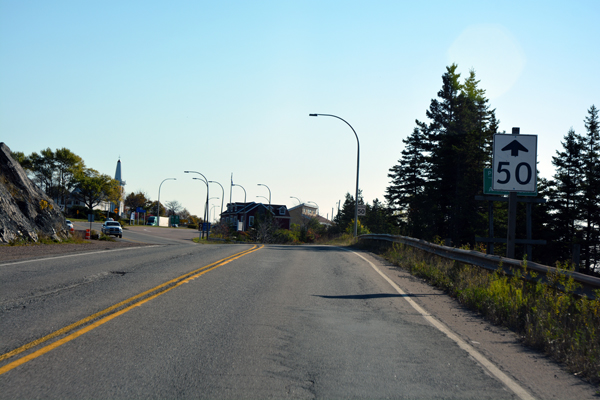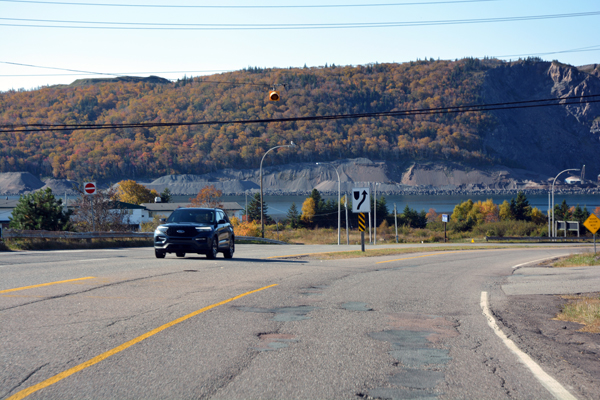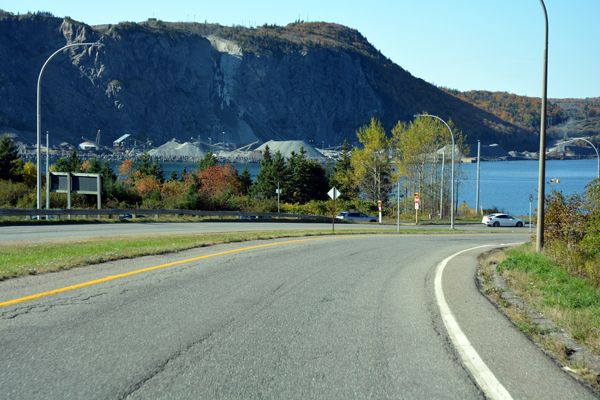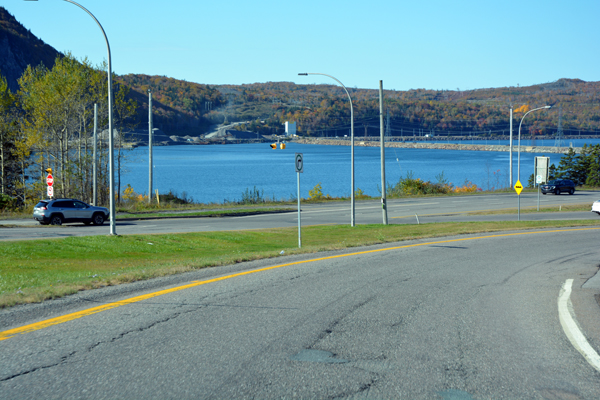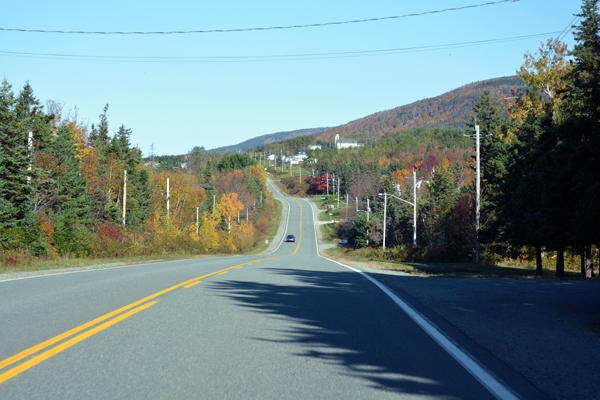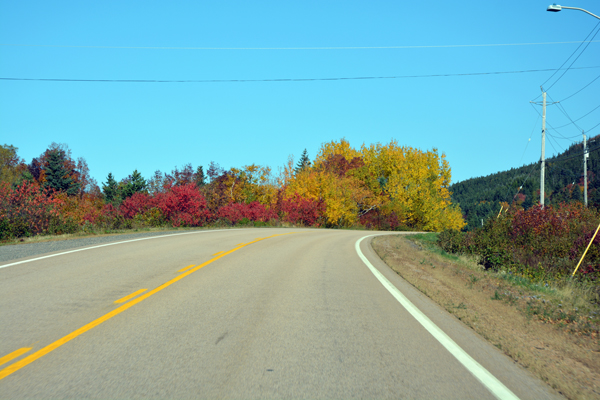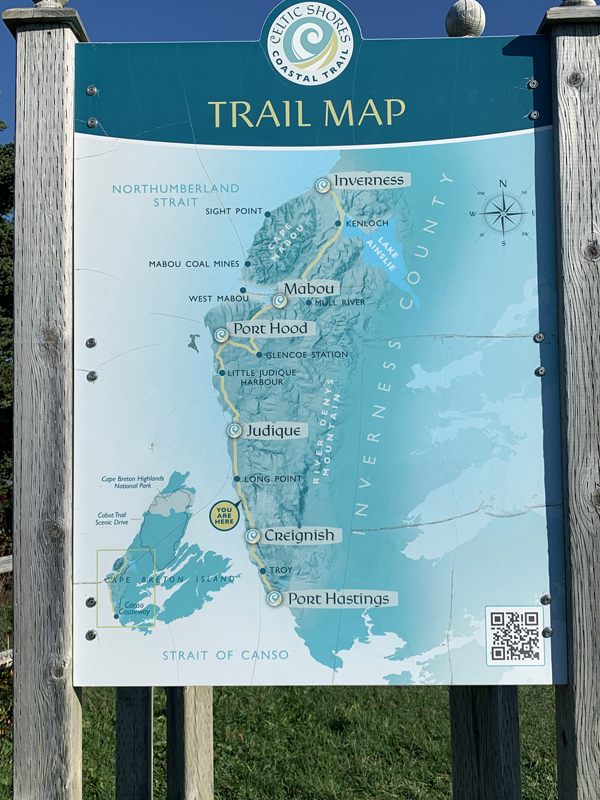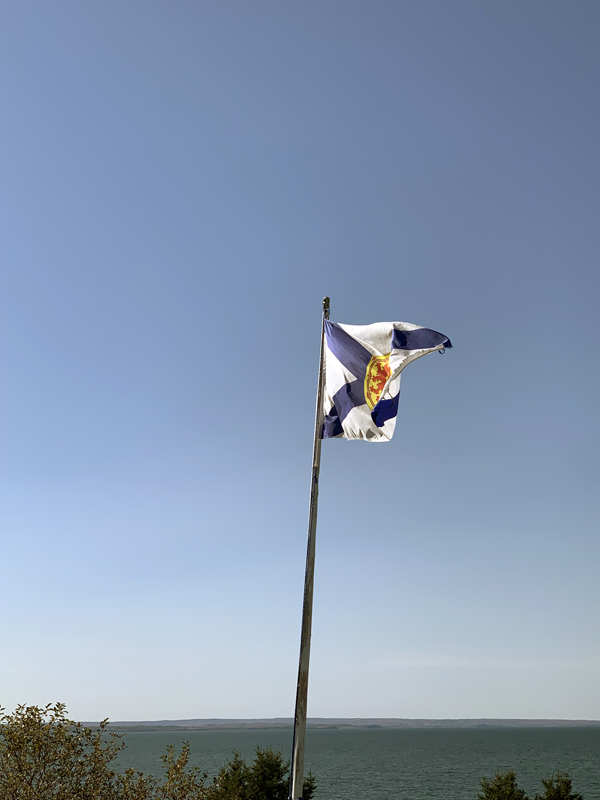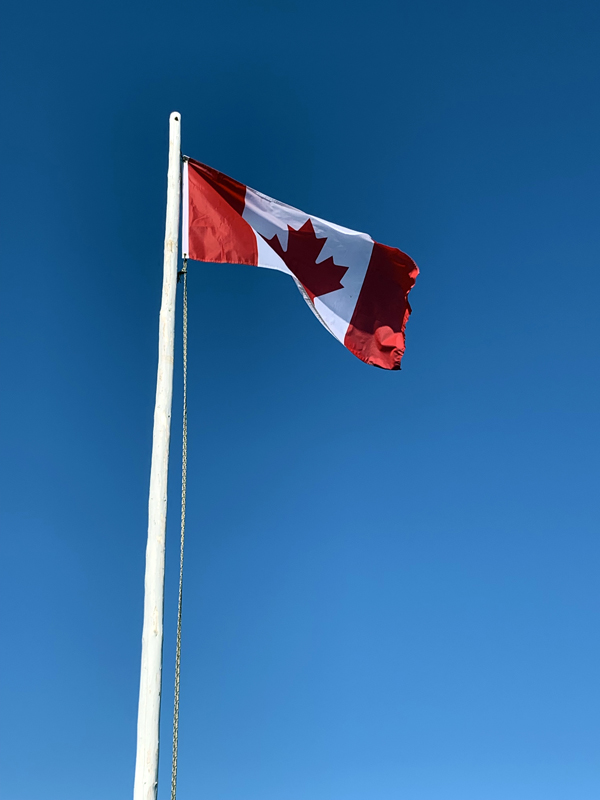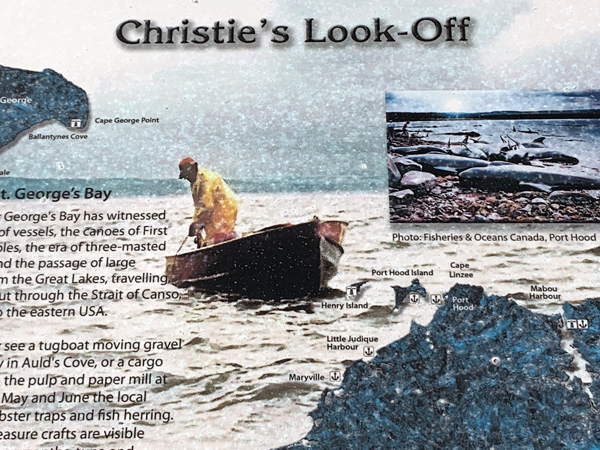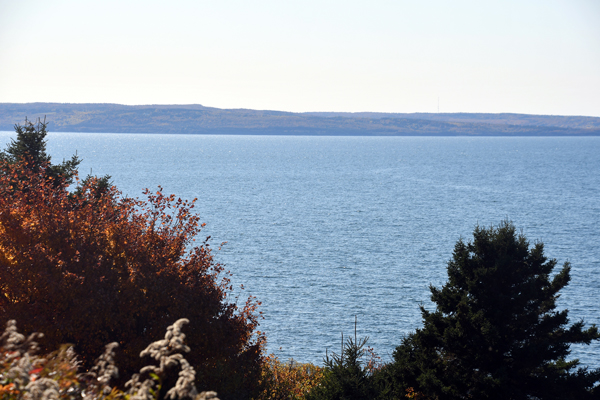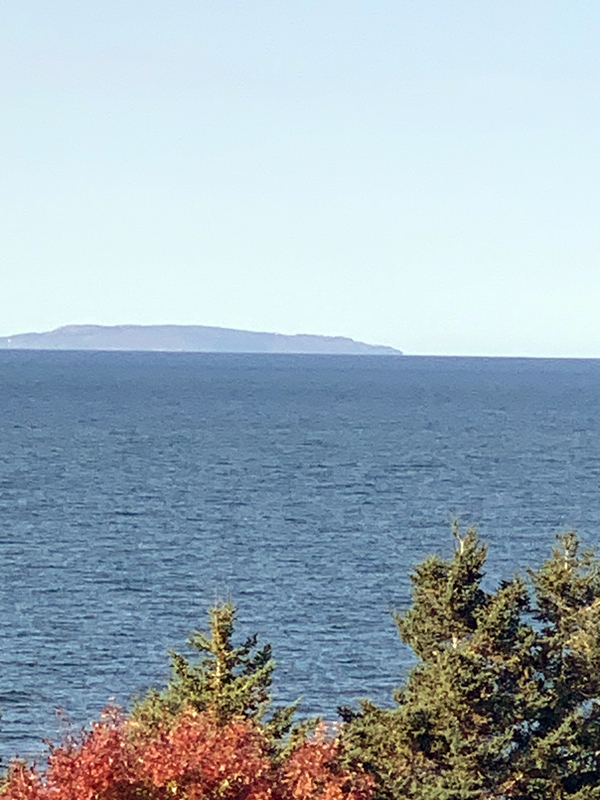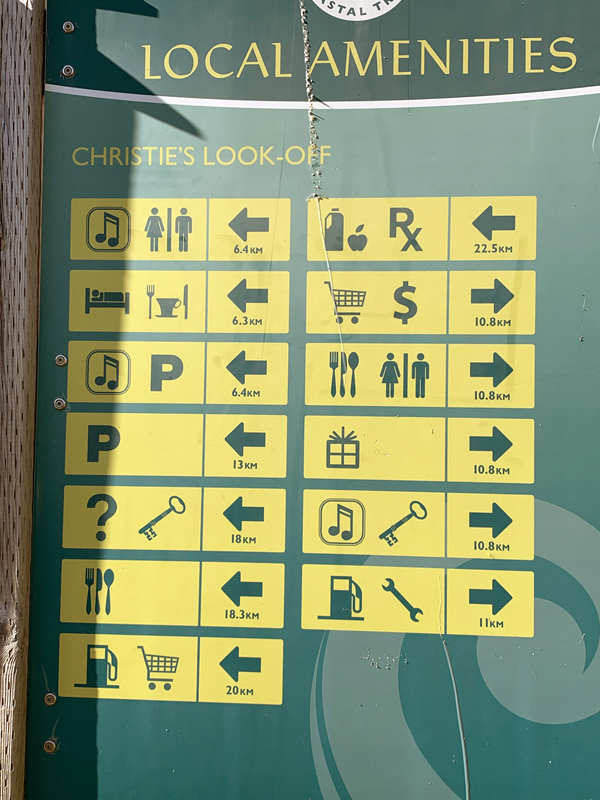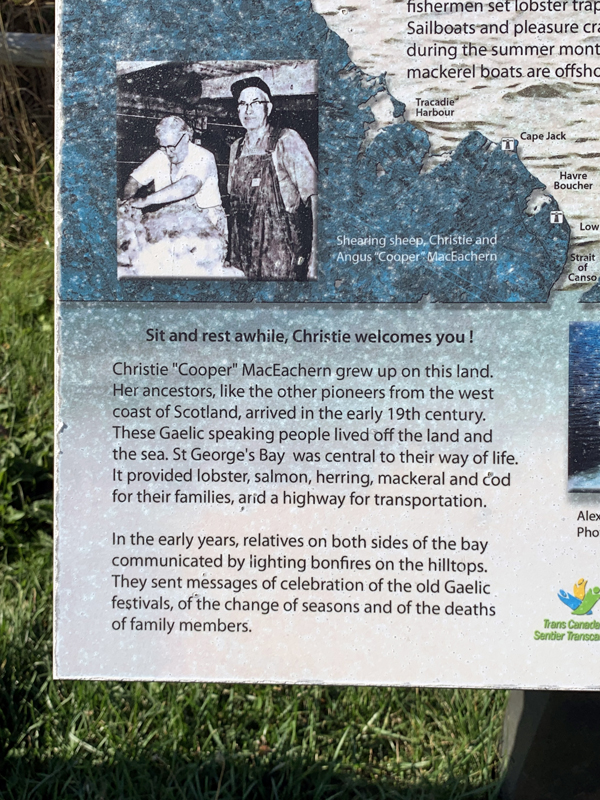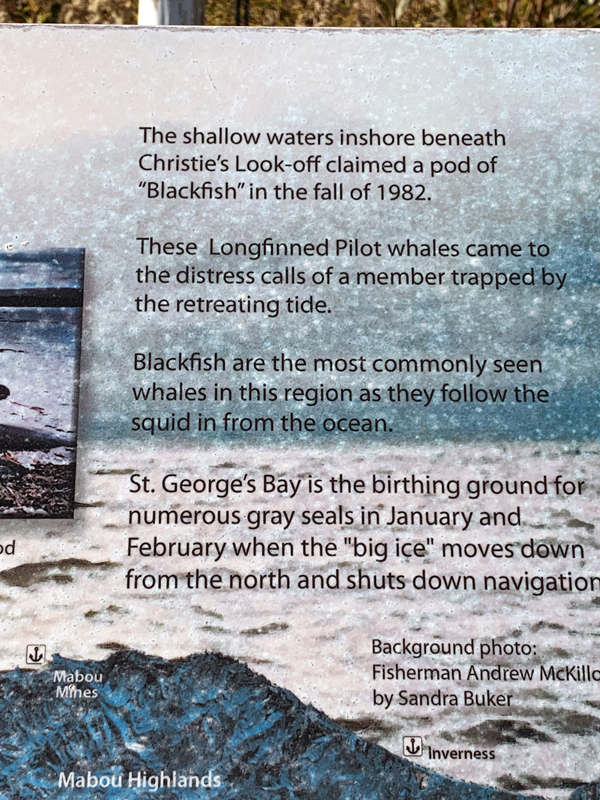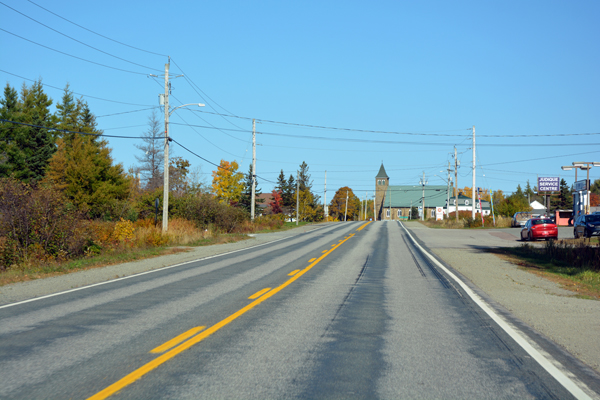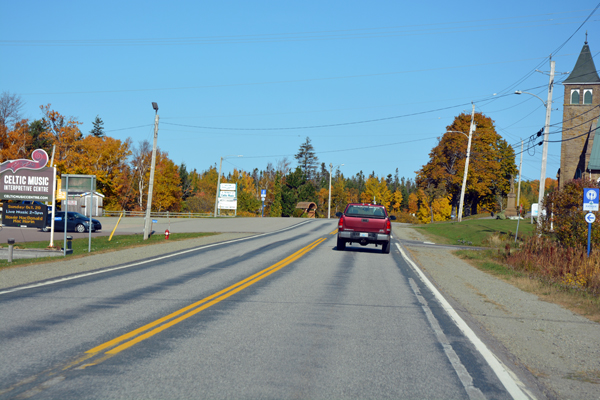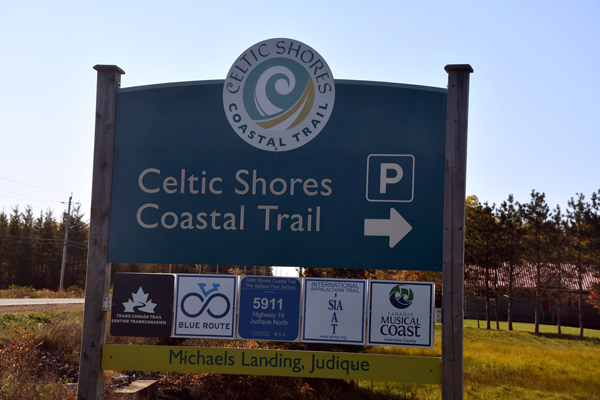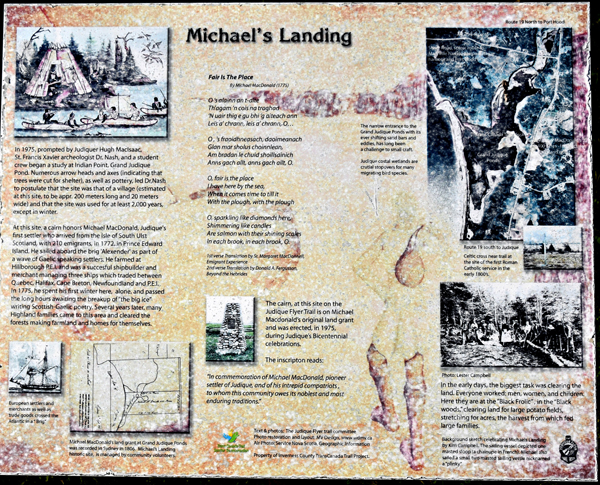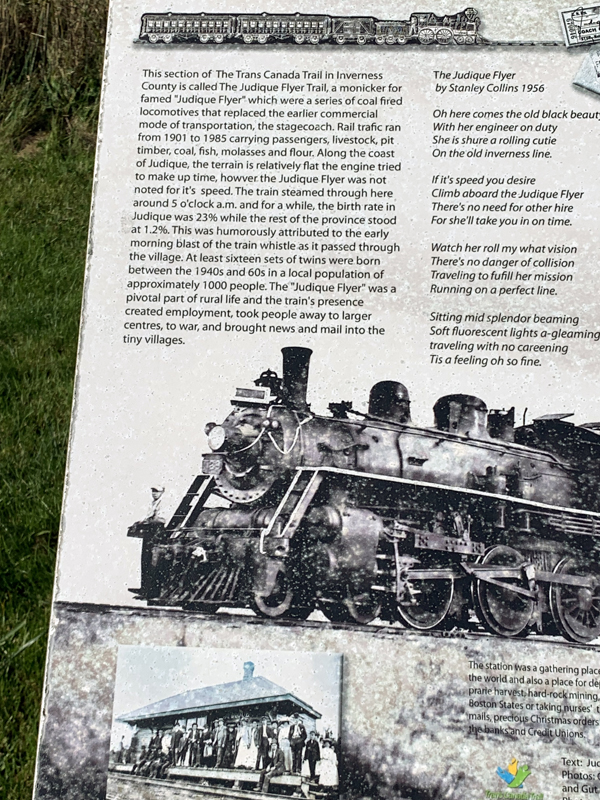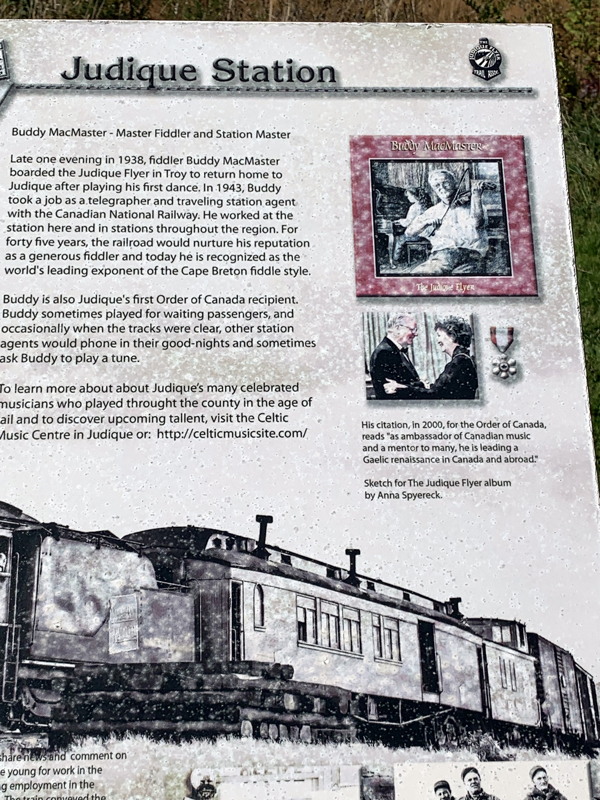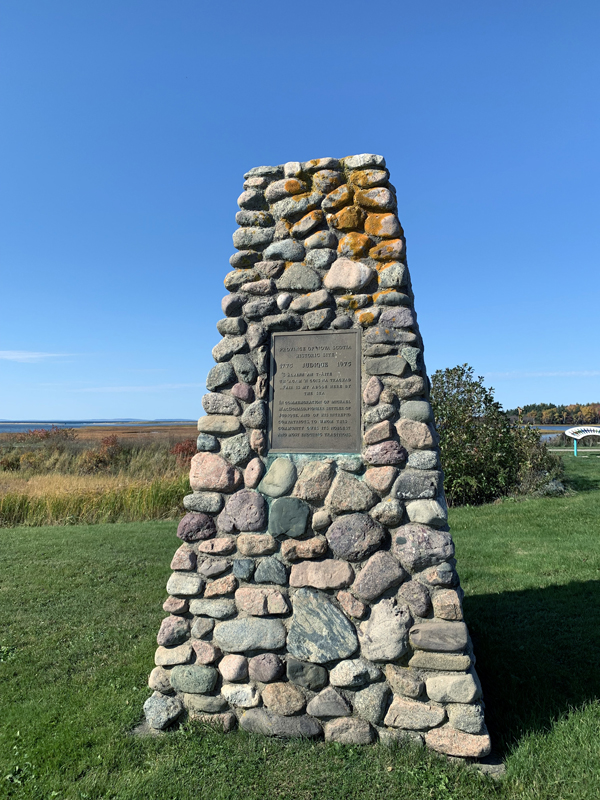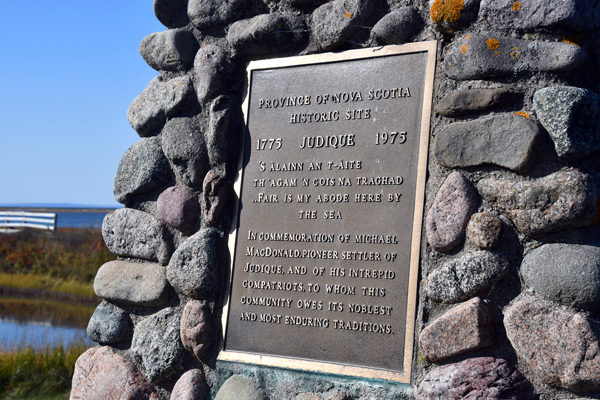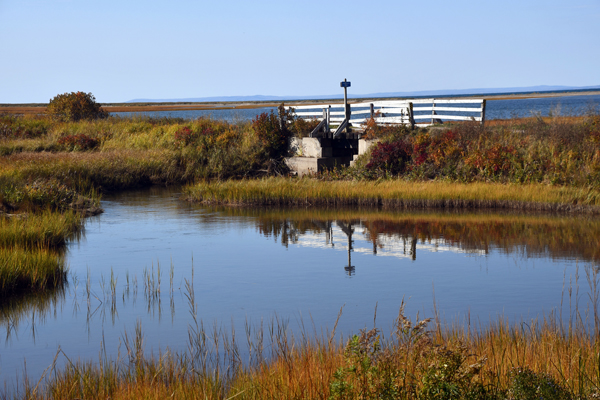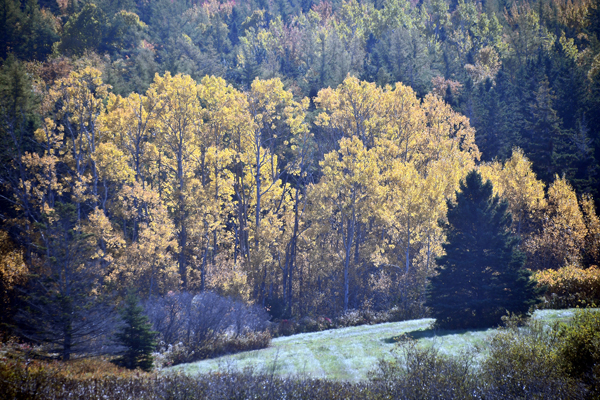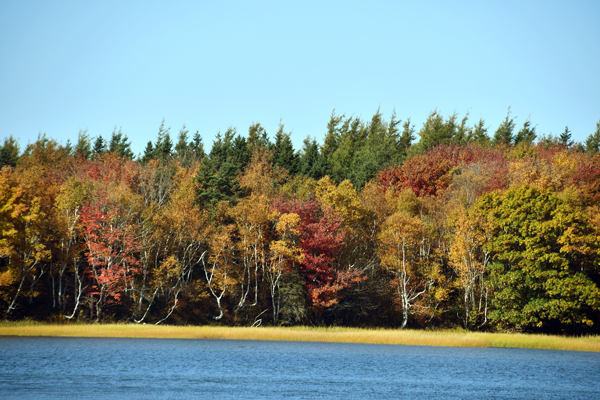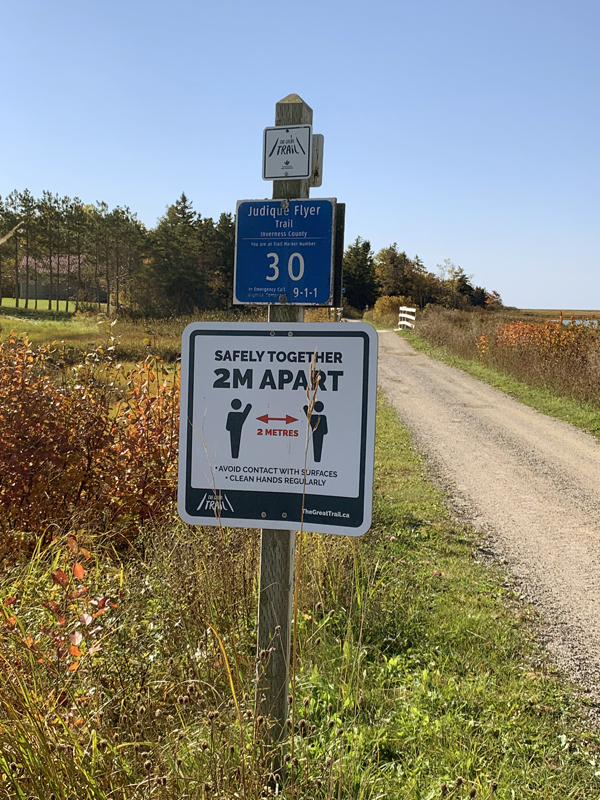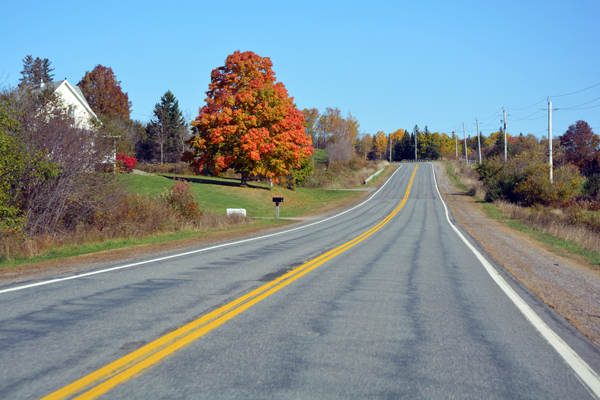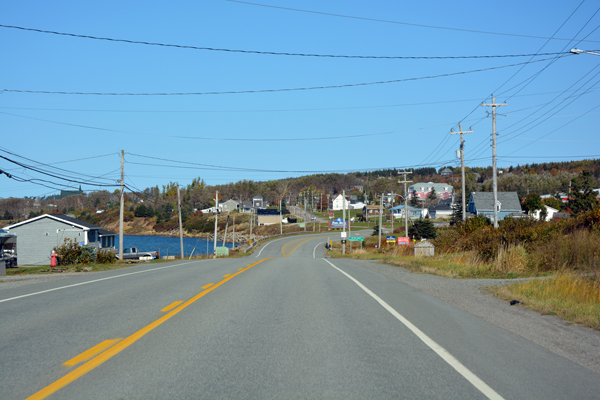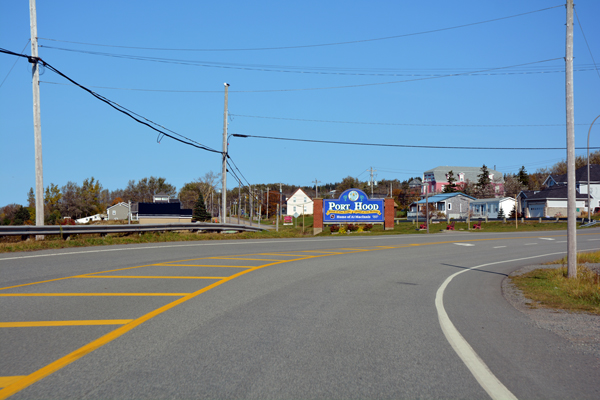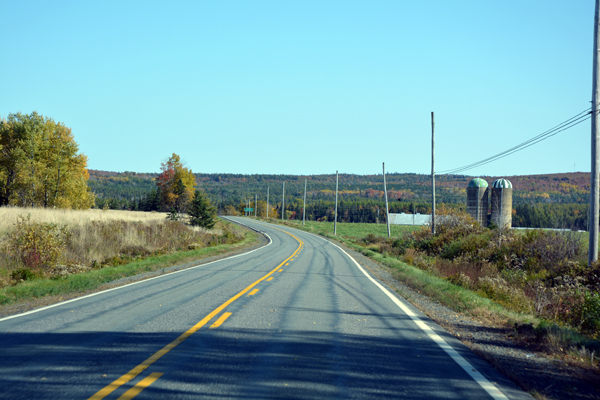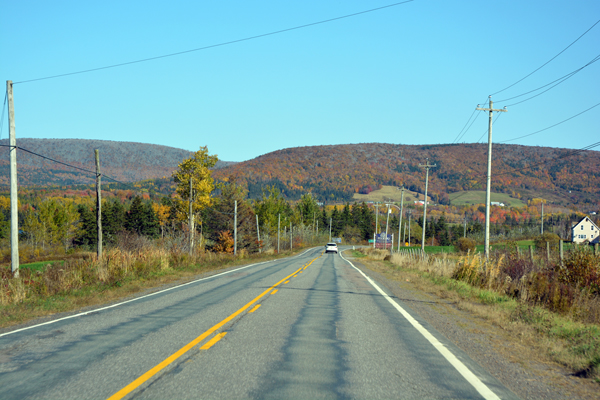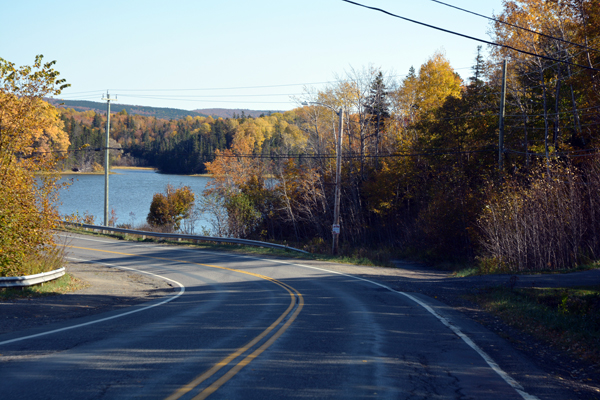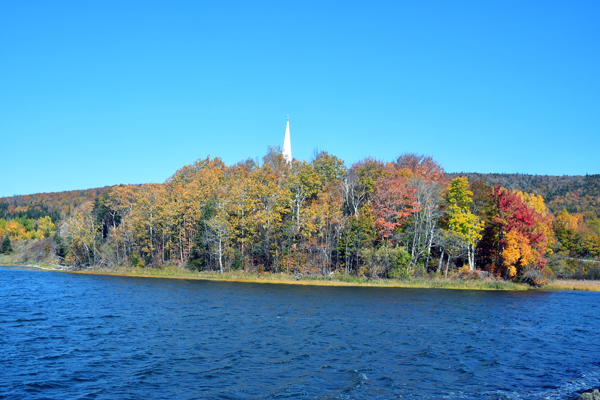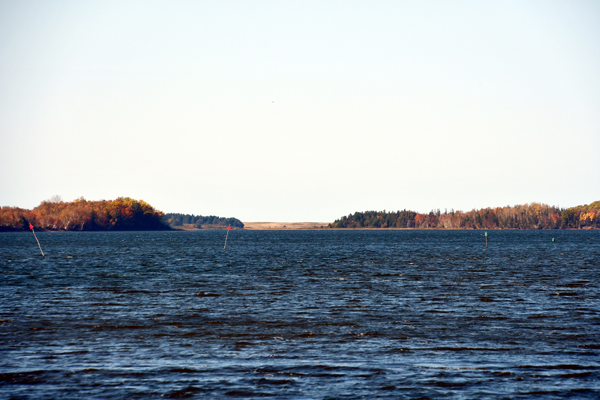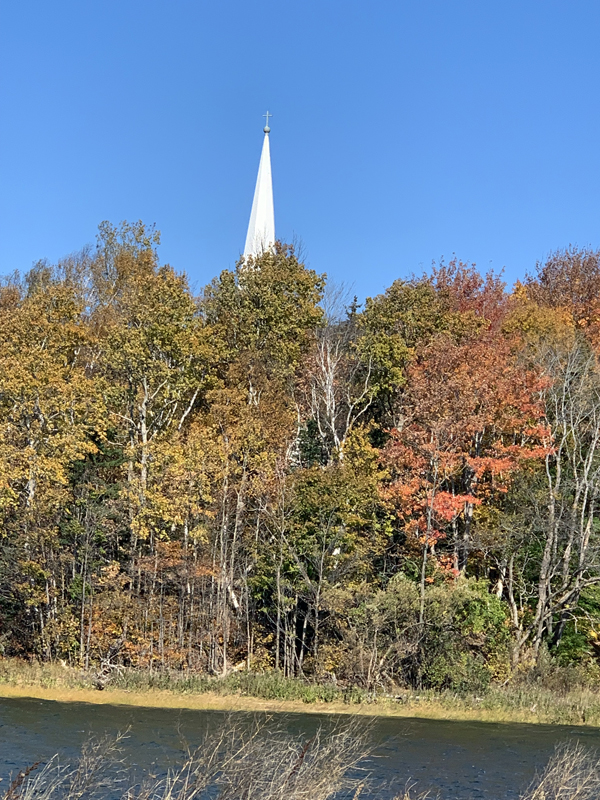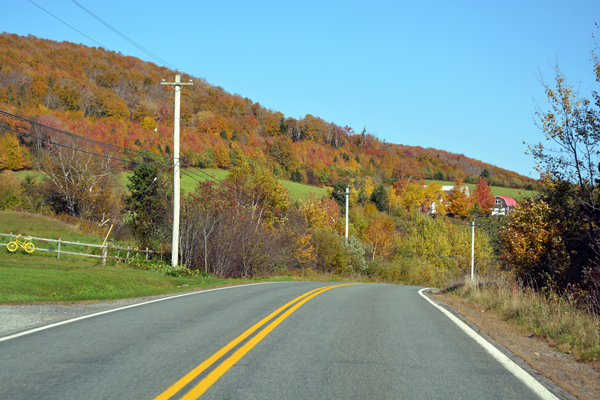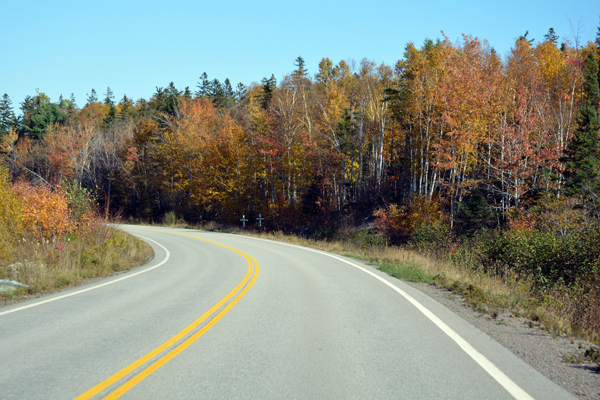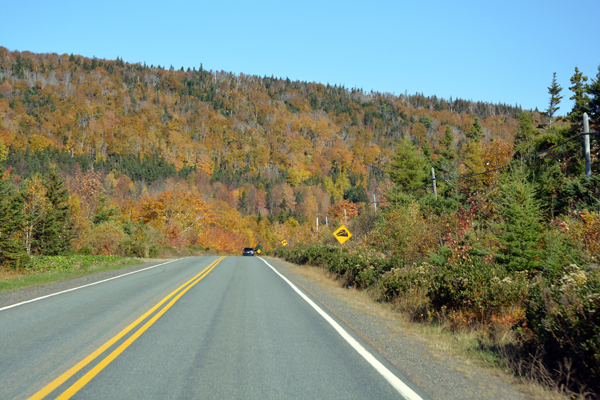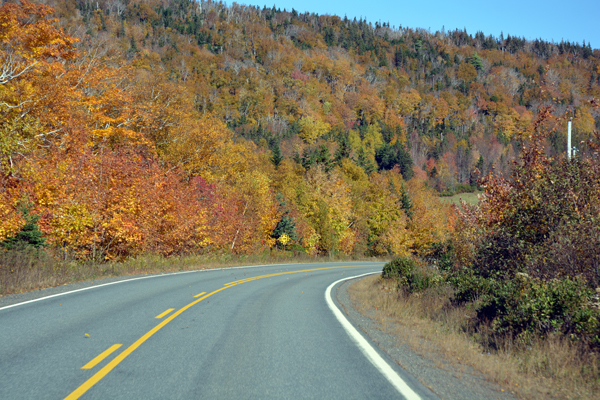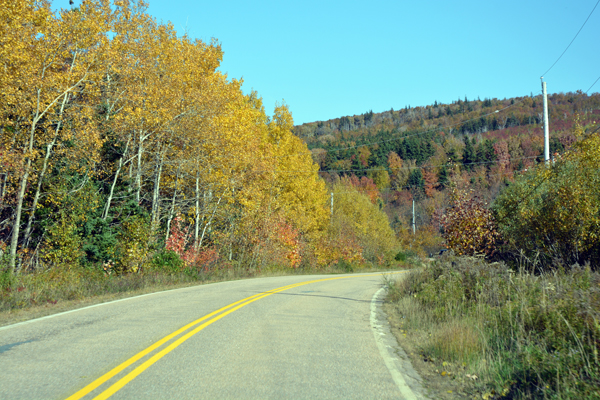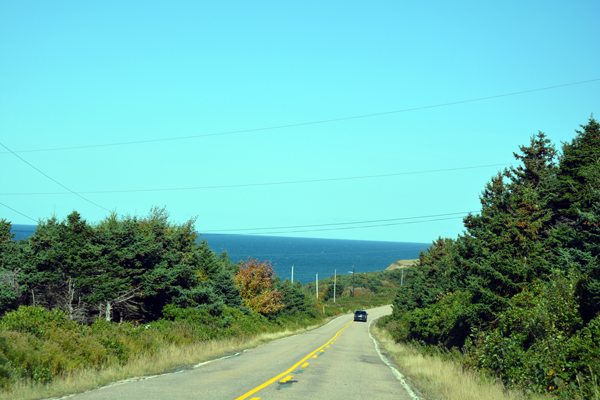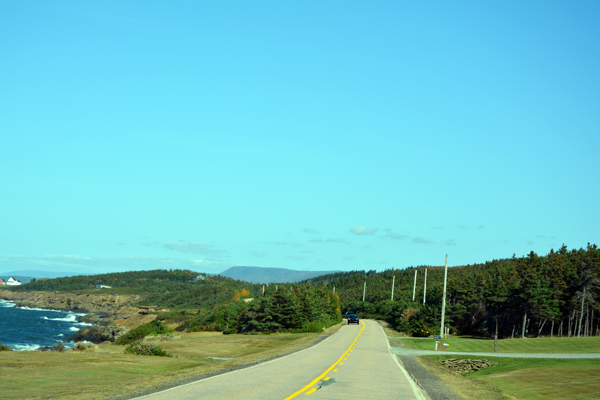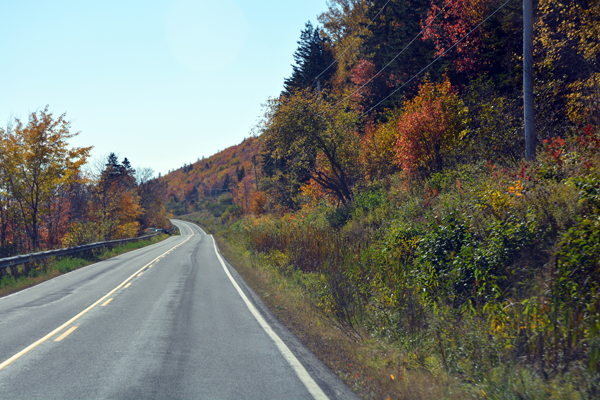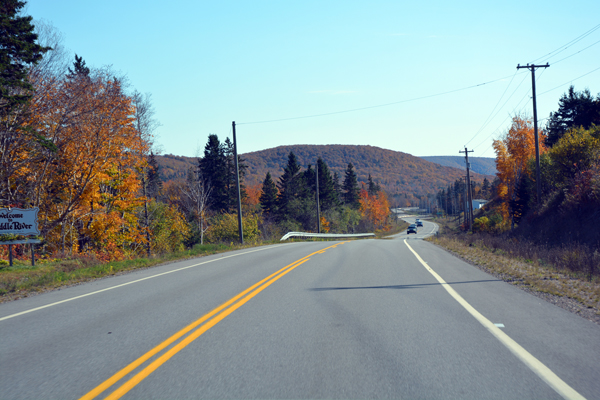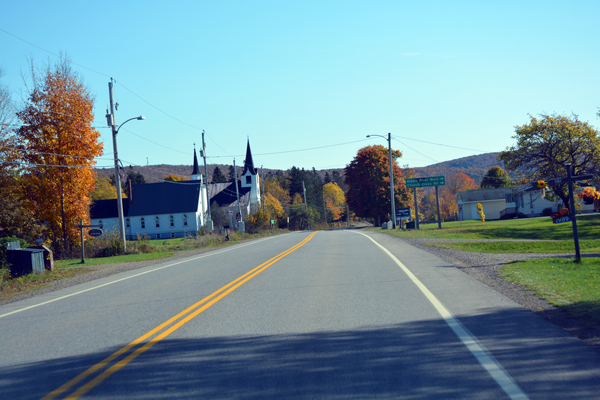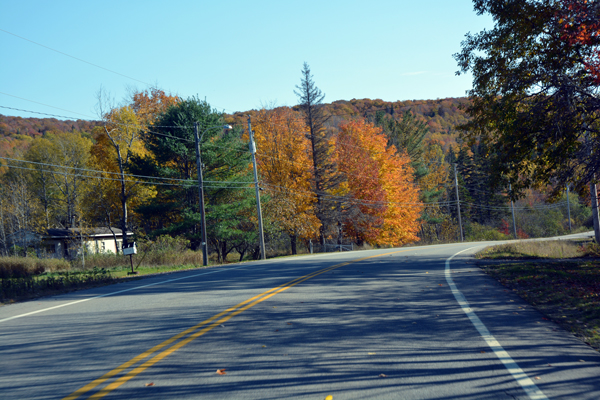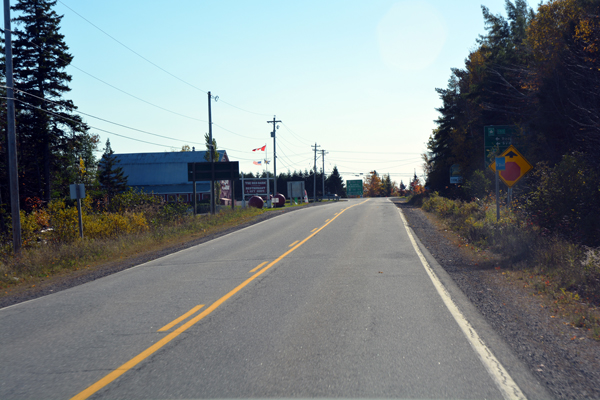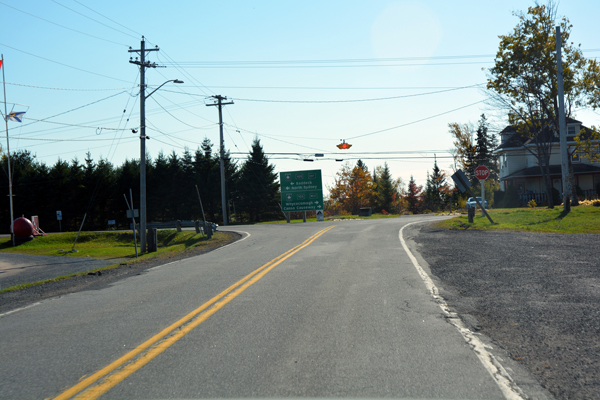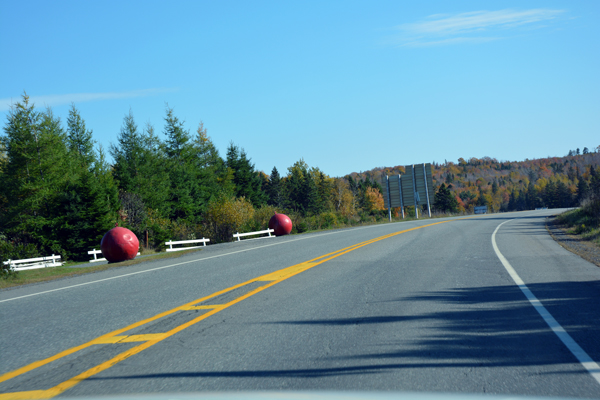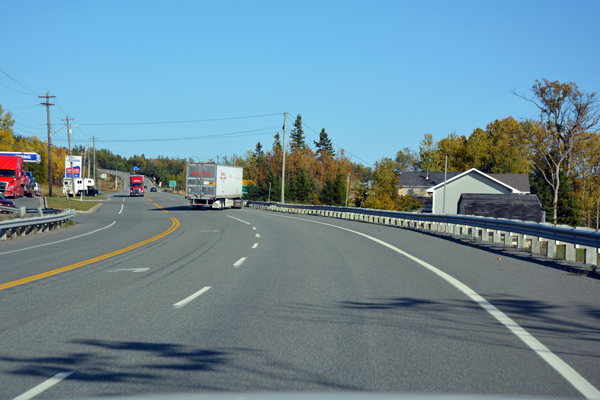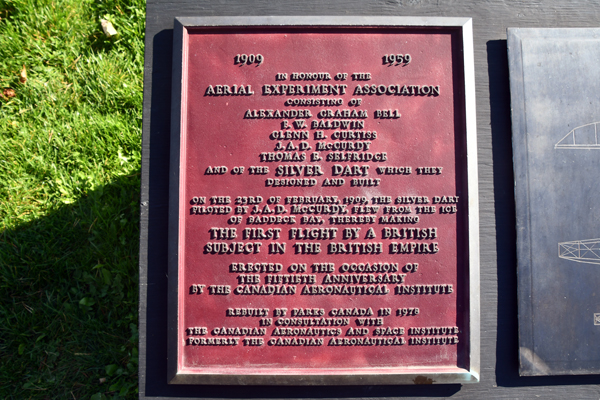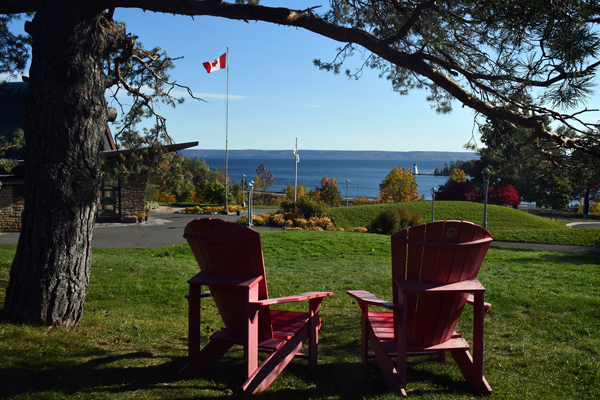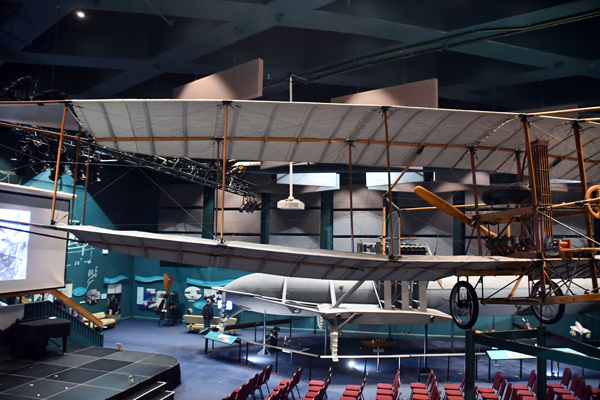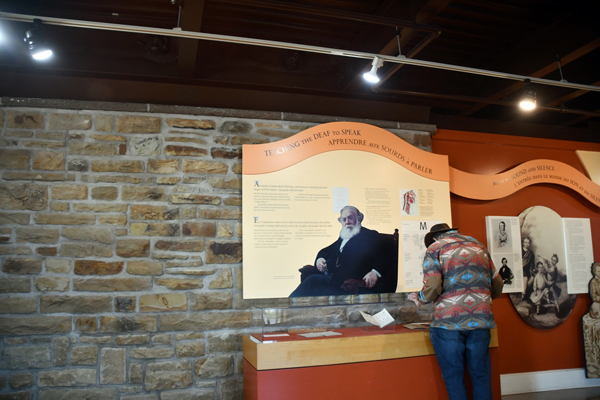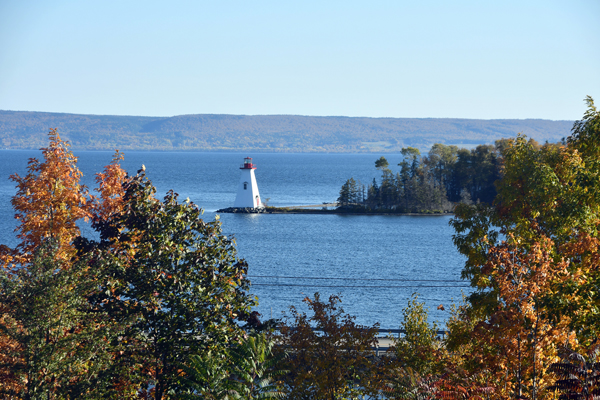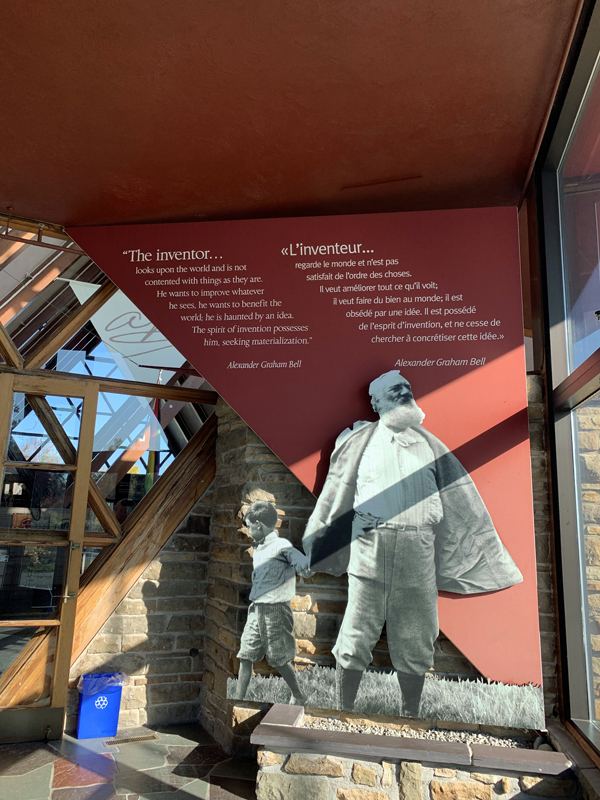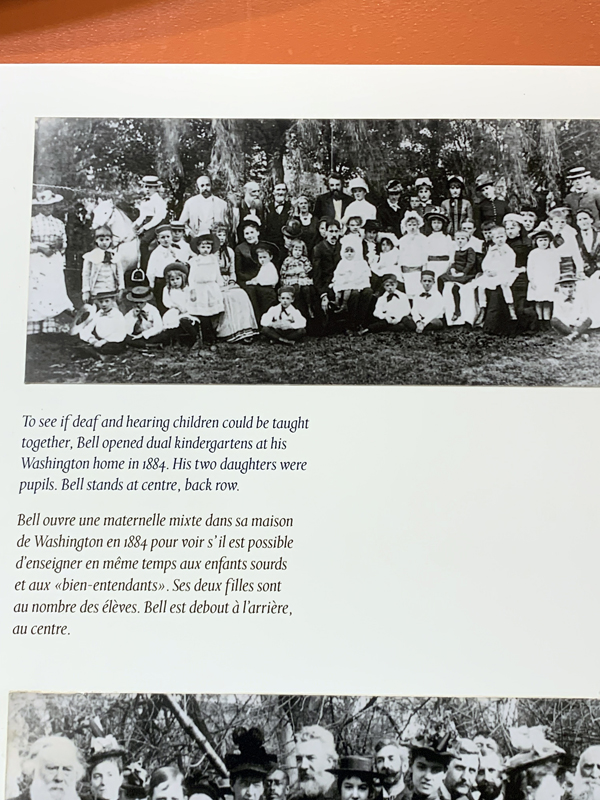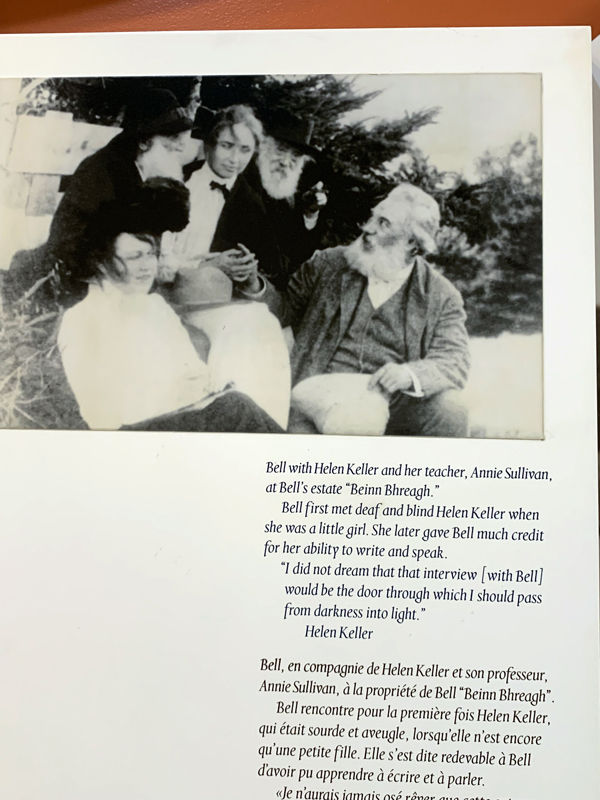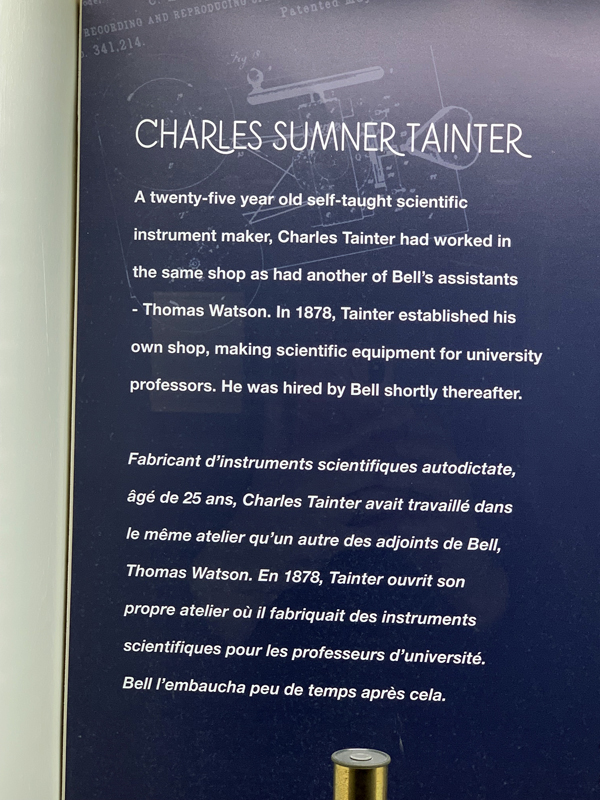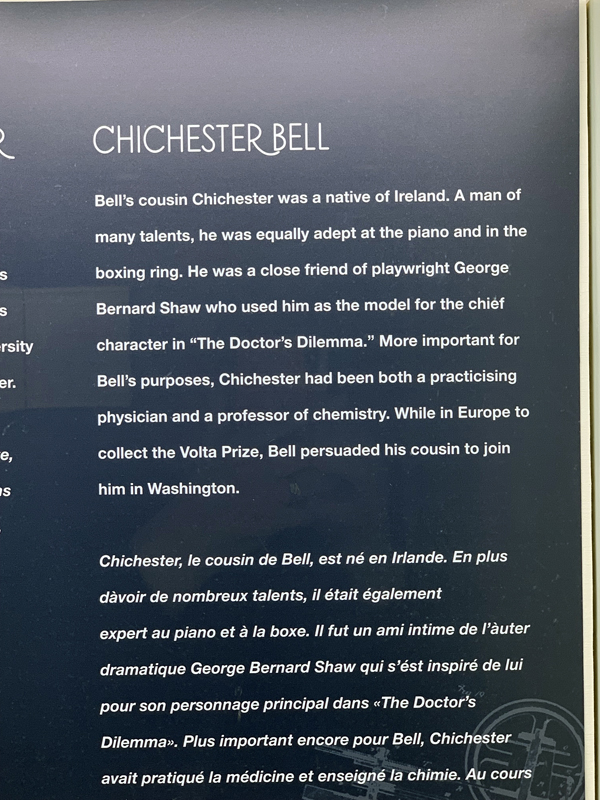From the Pacific to the Atlantic - Crossing Canada by Train
2 October - 5 November 2024
Canada 2024
19 October 2024: Day 18
Pictou to Baddeck, Nova Scotia.
Introduction
Breakfast was included the next morning. Elizabeth specialises in Eggs Benedict and her Hollandaise Sauce was the best I have tasted. After breakfast we headed east across Nova Scotia towards Cape Breton Island.
Although this is strictly an island there is a large causeway - the Canso Causeway that connects the two. From here we turned hard left onto Highway 19 and the start (or end) of the Cabot Trail - a tourist route that circles part
of Cape Breton. The road skirts the coast for several km, but without
many pull-offs, stopping places or (in the local parlance) "look-offs". We past Mabou and its interesting view of the harbour; Port Hood and Inverness. Then it was on to Margaree Harbour, the first of many "Margaree" localities
(there as 12 on the map). We turned south to Margaree Forks and then southeast across Cape Breton to Baddeck. Baddeck was a bustling town and we soon found it was the centre for the Breton arts, crafts and music scene -
and this was the last day of their "Celtic Colours" annual festival.
We checked into the Telegraph Hotel in the middle of town. We had a nice room looking out onto the lake, which I had fortunately booked months ago. Earlier in
the day I had received an email from the hotel welcoming us and noting that they still had a few bookings available for dinner. Fortunately I booked: when we arrived we were told the restaurant was fully booked for that night.
Dinner at the Telegraph was excellent, the best we had eaten.
I was intrigued by the local museum - The Alexander Graham Bell National Historic Site, run by Parks Canada. Of course I knew the name and his invention of the telephone, but why a museum here in Baddeck? So off we went
to find the answer. His family has migrated from Scotland to Baddeck when Alexander was young and he had spent a lot of his life here. The museum also focussed on his other interests and inventions - and there were many:
the telephone, wireless technology, kites, aeroplanes, hydrofoil boats. But his main passion was to assist the deaf to hear and speak. He taught the deaf to speak and this is how he met his pupil Mabel Hubbard whom he later
married. He also worked extensively with Helen Keller.
Pictou to Cape Breton Island
After breakfast we headed east across Nova Scotia towards the Canso Causeway and then onto Cape Breton Island. Just across the bridge there is a hard left onto Highway 19 and the start (or end) of the Cabot Trail but we
missed it and had to turn back - but that gave us a good view of the causeway. The Cabot Trail is a tourist route that circles Cape Breton. The road skirts the coast for several km, but without many pull-offs, stopping places or
(in the local parlance) "look-offs".
| Heading out of Pictou |
|
|
|
|
|
| Going East on the TCH |
|
|
|
|
|
|
|
|
|
|
. |
|
|
|
| Nearing the Canso Causeway |
|
|
| The Canso Causeway.. |
|
and the bridge |
| Entering Cape Breton Island |
Where we should have turned hard left.. |
|
|
now we had to turn right. |
|
| Going north on the Cabot Trail |
|
|
Christies Lookout
The map showed us Christies Landing was a good viewpoint, but it was not signposted so we had driven past before we recognised. Another U-turn was required. It does provide a good view west across to Nova Scotia and
further afield to Prince Edward Island. There were some interesting sign boards, but despite this being late in the tourist season the "look-off" was overgrown and unkempt.
|
|
|
|
|
|
|
These pictograms need some imagination. Why the key? |
|
|
|
|
Michael's Lookout and the Junique Railway
Next the road moves inland for a distance, passing through Junique before reaching Indian Pond, a rivermouth now closed by a gravel bar. Here we stopped at Michael's Landing for the view, the history and an intriguing
musicalinstrument.
|
|
Judique. |
| Michael's Landing |
|
There was once a railway sation here. |
|
|
|
|
Now it is a cycle trail. |
|
|
|
A very clever xylophone - strictly it as a metalophone as the bars are of metal not wood. |
| The cycle trail - 2m separation (ex-Covid or a safety measure? |
|
More pictograms: maybe "mystery dining", segregated email facilities, music boxes, music is the key, windy area, picnic tables are hard to find, locked church, windy boat ramp, put a spanner in your tank, beware of biting insects and finally you can post local food home. |
The Margarees and the rough road to Baddeck
From Judique the road runs north, rejoining the coast at Port Hood before heading inland again. We saw water at Mabou, but this was the head of a long narrow harbour. We continued to Inverness and Dunvegan where
we took the coastal road to Margaree Harbour. Then righ to Margaree Forks and the section of Cabot Trail that heads southeast to Baddeck. The road from Margaree Fork to the intersection at Buckwheat Corner was in the worst
condition of any road we travelled on - and some of them were full of potholes, but this road was in a shocking state. All we can hope is that the construction of several new bridges on the route is the forerunner of a major
road rebuild. As this is a critical part of the Cabot Way it handles thousands of vehicles each year.
|
|
Entering Port Hood |
|
The Clove Hitch Bar a nd Bistro |
|
|
|
Mabou. The track on the left goes to a noce picnic area wherew e stopped for a cup of tea. |
| The Mabou picnic area. |
|
|
|
|
|
|
|
Entering Inverness |
| the local Church - Stella Maris. |
|
|
|
|
|
|
|
|
| Margaree harbour. |
|
The potholed road to Baddeck. |
|
|
|
|
|
|
|
|
|
|
|
|
|
|
|
| Buckwheat Corner. |
|
Entering Baddeck. |
Baddeck and the Alexander Bell Museum
We arrived in Baddeck to find it full of people - more than we had seen anywhere else on this trip. Surely they are not all here just for the Cabot Trail and the autumn colours. We checked in to the Telegraph Hotel
and the chatty lady asked us if were here for the "colours" - "yes, of course" but she meant the "Celtic Colours", the week-long extravaganza of arts, music and theatre. This was the last night. No wonder the town was full
and the restaurants booked out! But Baddeck has another, more enduring, claim to fame: the Alexander Graham Bell Museum. Why him? And why here of all places? So off we went to the museum to find out. We were almost
alone in seeking answers. Maybe all the arts scene people had already been (but I suspect not).
The Alexander Graham Bell National Historic Site is run by Parks Canada. Of course I knew the name and his invention of the telephone, but he did so much more. His family has migrated from Scotland to Baddeck when
Alexander was young and he had spent a lot of his life here. The museum also focussed on his other interests and inventions - and there were many: the telephone, wireless technology including a radio phone, kites, aeroplanes,
hydrofoil boats. But his main passion was to assist the deaf to hear and speak. He taught the deaf to speak and this is how he met his pupil Mabel Hubbard whom he later married. He also worked extensively with Helen Keller.
 Back to previous day-------------
Back to previous day-------------
 Forward to next day
Forward to next day
Return to Trip Index
Return to Trip Index
Last updated: 15 December 2024
|
 Back to previous day-------------
Back to previous day-------------
 Forward to next day
Forward to next day